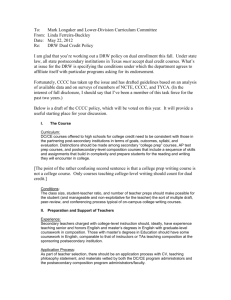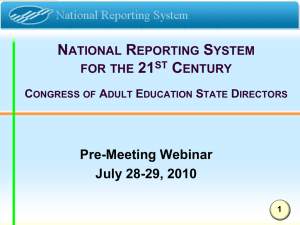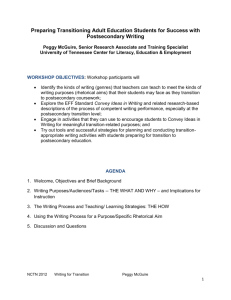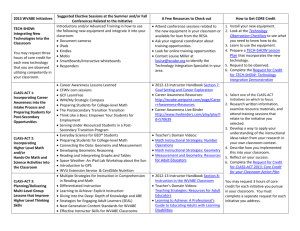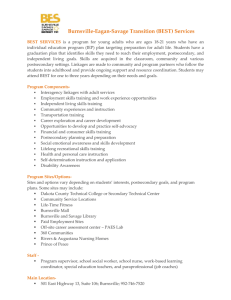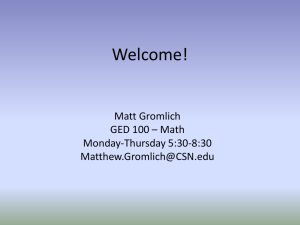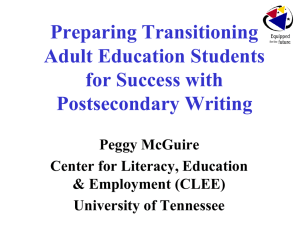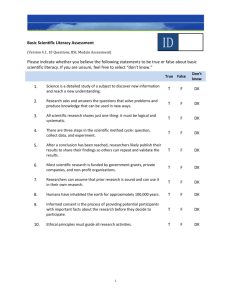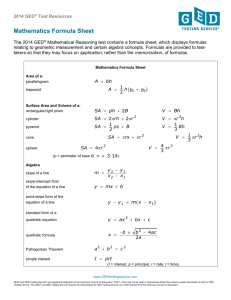Typology of Adult Transition Programs
advertisement
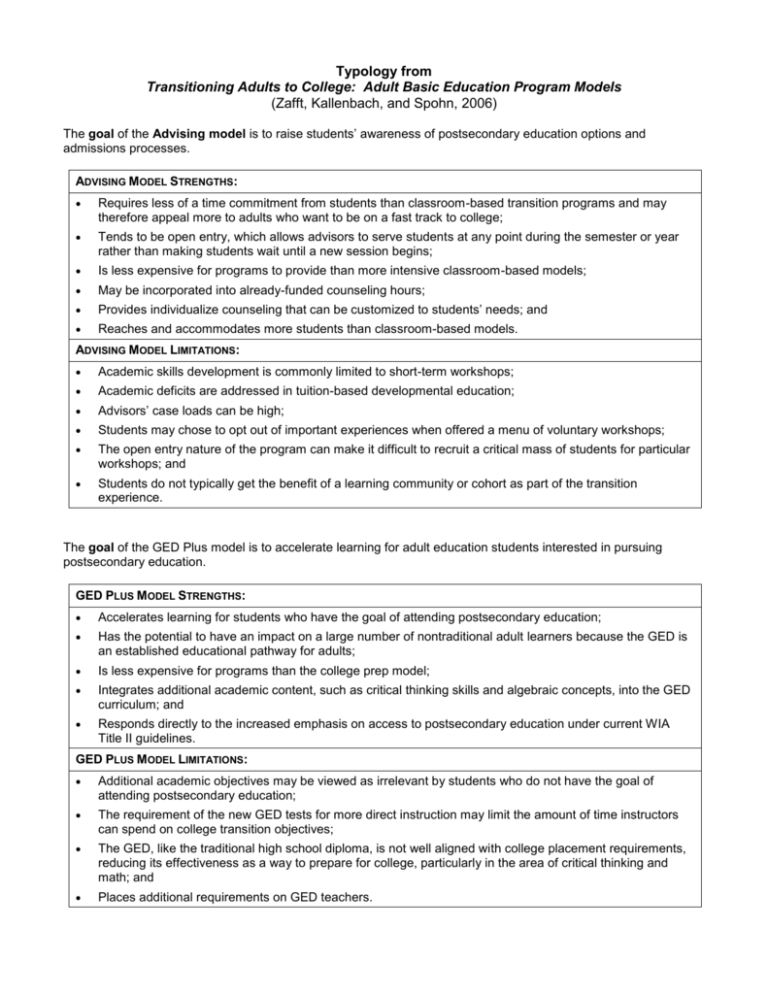
Typology from Transitioning Adults to College: Adult Basic Education Program Models (Zafft, Kallenbach, and Spohn, 2006) The goal of the Advising model is to raise students’ awareness of postsecondary education options and admissions processes. ADVISING MODEL STRENGTHS: Requires less of a time commitment from students than classroom-based transition programs and may therefore appeal more to adults who want to be on a fast track to college; Tends to be open entry, which allows advisors to serve students at any point during the semester or year rather than making students wait until a new session begins; Is less expensive for programs to provide than more intensive classroom-based models; May be incorporated into already-funded counseling hours; Provides individualize counseling that can be customized to students’ needs; and Reaches and accommodates more students than classroom-based models. ADVISING MODEL LIMITATIONS: Academic skills development is commonly limited to short-term workshops; Academic deficits are addressed in tuition-based developmental education; Advisors’ case loads can be high; Students may chose to opt out of important experiences when offered a menu of voluntary workshops; The open entry nature of the program can make it difficult to recruit a critical mass of students for particular workshops; and Students do not typically get the benefit of a learning community or cohort as part of the transition experience. The goal of the GED Plus model is to accelerate learning for adult education students interested in pursuing postsecondary education. GED PLUS MODEL STRENGTHS: Accelerates learning for students who have the goal of attending postsecondary education; Has the potential to have an impact on a large number of nontraditional adult learners because the GED is an established educational pathway for adults; Is less expensive for programs than the college prep model; Integrates additional academic content, such as critical thinking skills and algebraic concepts, into the GED curriculum; and Responds directly to the increased emphasis on access to postsecondary education under current WIA Title II guidelines. GED PLUS MODEL LIMITATIONS: Additional academic objectives may be viewed as irrelevant by students who do not have the goal of attending postsecondary education; The requirement of the new GED tests for more direct instruction may limit the amount of time instructors can spend on college transition objectives; The GED, like the traditional high school diploma, is not well aligned with college placement requirements, reducing its effectiveness as a way to prepare for college, particularly in the area of critical thinking and math; and Places additional requirements on GED teachers. The goal of the ESOL model is to reduce the time and expense of additional ESOL/ESL coursework at the start of the students’ college career. ESOL TRANSITION MODEL STRENGTHS: Develops academic language skills for college; Lends itself to addressing curricular alignment with credit-based ESL or introductory composition courses; Tends to have clear academic benchmarks for admission to the transition-level classes; and Tends to monitor student learning gains closely. ESOL TRANSITION MODEL LIMITATIONS: Limits academic skills development to language arts and tends not to include math; Tends to have high caseloads for advisors; and Graduates of the transition classes often still need more ESL instruction in college and may use up financial aid for it. The goal of the Career Pathways model is to get students with limited education into advanced training and college-level programs in high-wage, high –growth employment sectors. CAREER PATHWAYS MODEL STRENGTHS: Provides access to college-level occupational training for students who are not academically prepared for college-level courses; Accesses resources for adult transition from public workforce development programs and private employers; Makes instruction more immediately relevant to students’ career interests through a contextualized curriculum (which likely improves retention); Creates steppingstones to career preparation programs that can lead to an academic credential; and Ensures the relevance of the curriculum to available jobs when accompanied by employer involvement. CAREER PATHWAYS MODEL LIMITATIONS: Can limit students’ options to whatever sector-specific training is available; May prematurely narrow students’ vocational options; and May not adequately prepare students for future college-level courses, which can inhibit ability to move from certificate-level programs into associate degree programs and beyond. The goal of the College Prep model is to enable students to transition successfully into college-level courses or, at the very least, begin their college career at the upper tier of developmental education. COLLEGE PREPARATORY MODEL STRENGTHS: Provides direct instruction to build academic skills, e.g., algebra, reading, and critical thinking; Is designed to meet the multiple needs of adult students, including academic, psychosocial, and career development; Lends itself to addressing curricular alignment between the adult education and postsecondary systems; Helps students conserve personal financial resources and time in college by working toward direct placement into college-level coursework or the highest levels of developmental education; Creates cohorts within the transition program; May allow for dual credit for coursework; and Encourages partnerships with other educational and social service providers and businesses. COLLEGE PREPARATORY MODEL LIMITATIONS: May be considered too time-consuming by students, making them reluctant to sign-up for classes; Requires instructors to align their instruction with academic requirements of the postsecondary institution; Requires programs to meet a wide range of student academic needs which can be challenging in terms of instructional methodology and the learning community; Has no clear ownership by the adult education or the postsecondary education systems; Has no clear federal public funding stream and is the most expensive program type; and Typically serves fewer students than other models.
